
- For PC
- For MAC
- For Linux
- OS: Windows 7 SP1/8/10 (64 bit)
- Processor: Dual-Core 2.2 GHz
- Memory: 4GB
- Video Card: DirectX 10.1 level video card: AMD Radeon 77XX / NVIDIA GeForce GTX 660. The minimum supported resolution for the game is 720p.
- Network: Broadband Internet connection
- Hard Drive: 17 GB
- OS: Windows 10/11 (64 bit)
- Processor: Intel Core i5 or Ryzen 5 3600 and better
- Memory: 16 GB and more
- Video Card: DirectX 11 level video card or higher and drivers: Nvidia GeForce 1060 and higher, Radeon RX 570 and higher
- Network: Broadband Internet connection
- Hard Drive: 95 GB
- OS: Mac OS Big Sur 11.0 or newer
- Processor: Core i5, minimum 2.2GHz (Intel Xeon is not supported)
- Memory: 6 GB
- Video Card: Intel Iris Pro 5200 (Mac), or analog from AMD/Nvidia for Mac. Minimum supported resolution for the game is 720p with Metal support.
- Network: Broadband Internet connection
- Hard Drive: 17 GB
- OS: Mac OS Big Sur 11.0 or newer
- Processor: Core i7 (Intel Xeon is not supported)
- Memory: 8 GB
- Video Card: Radeon Vega II or higher with Metal support.
- Network: Broadband Internet connection
- Hard Drive: 95 GB
- OS: Most modern 64bit Linux distributions
- Processor: Dual-Core 2.4 GHz
- Memory: 4 GB
- Video Card: NVIDIA 660 with latest proprietary drivers (not older than 6 months) / similar AMD with latest proprietary drivers (not older than 6 months; the minimum supported resolution for the game is 720p) with Vulkan support.
- Network: Broadband Internet connection
- Hard Drive: 17 GB
- OS: Ubuntu 20.04 64bit
- Processor: Intel Core i7
- Memory: 16 GB
- Video Card: NVIDIA 1060 with latest proprietary drivers (not older than 6 months) / similar AMD (Radeon RX 570) with latest proprietary drivers (not older than 6 months) with Vulkan support.
- Network: Broadband Internet connection
- Hard Drive: 95 GB
|
|
Members of the pre-beta test will be able to test this destroyer in one of the future tests, and results of this test will taken into account for the future development of our fleet. |
Introduced in the early 1940s and serving well after WW2 with other nations, few ships ever managed to gain such an iconic status during their operational service as the US Fletcher class destroyer. Instantly recognizable to most fans of military history, this naval legend is ready to be deployed in one of the upcoming naval testing sessions to once more change the tide of battle.
The Fletcher class destroyer is one of the most famous and most produced warships developed and built for the US navy in WW2. Her story begins in 1939 when work on a new generation of US destroyers began as a result of unsatisfactory performance of the current generation of destroyers. Knowing their destroyers wouldn’t have the range or adequate firepower to fight a possible war in the Pacific against the Japanese, the US navy issued specific requirements for new designs that intended to increase the operational range, speed and firepower of the next generation of destroyers. Knowing that the limitations imposed by the naval treaties of the day would severely hinder the development of future destroyer projects, the US opted to ignore the various restrictions in favor of continuing development on their new state-of-the-art destroyer. Eventually, after several years of development, the first Fletcher class destroyers would leave their drydocks in 1941 to be commissioned for duty in the following year.
Keeping in mind that the Fletcher class destroyer would primarily serve in the Pacific theatre where the sea wasn’t as rough as in the Atlantic, designers optimized the shape and layout of the ship for the much calmer waters of the Pacific by employing a so called “flush deck” construction as opposed to the traditional “forecastle” construction design used on previous generations of destroyers. This not only made the Fletcher a very sturdy ship, but also one that allowed for fast and easy retrofitting of modifications to the weapon systems. This quality proved invaluable in the later stages of the war in the Pacific when Japanese suicide tactics, such as kamikaze attacks, became more and more frequent, allowing Fletcher class destroyers to quickly be modified to carry not just more, but also heavier anti-air weapons, such as the highly effective 40mm Bofors cannon. Being so flexible meant that the Fletcher was able to perform literally any and all tasks that were fit for a destroyer, and perform them well.
By forming the backbone of the US navy in WW2, it should come to no surprise that the Fletcher class destroyers took part in nearly all combat operations across the Pacific ocean, from Midway to Okinawa. The excellent performance was mirrored by the fact that US dockyards produced a total of 175 Fletcher class destroyers between 1942 - 1945, out of which 25 were lost in combat. After the war, the Fletcher continued on to serve for many years to come in navies from across the globe, with the last Fletcher, in service with Mexico’s navy, retiring in 2001.
Though outmatching Fletcher’s real life performance will be nigh impossible, future commanders of this ship in War Thunder will have all tools at their disposal to give the real thing a good run for its money. Sporting a fearsome array of offensive armaments, ranging from five 127mm cannons mounted in single turrets to ten 533mm torpedo tubes spread across two launchers located mid-ships, the Fletcher is able to confidently take on any foe in battle only to send it to the bottom of the ocean shortly after. And while the player is busy engaging the enemy ships with the main cannons or torpedoes, the AI gunners will make devastating use of the vast array of AA mounts spread out evenly across the ship’s deck, not letting any warbird get too close for comfort. The AA armament of the Fletcher consists of a number of 20mm Oerlikon and 40mm Bofors cannons, two highly effective and renowned WW2 AA weapons. However, should the tide of battle change against our Fletcher commanders, making retreat the only viable option, do not despair. Two steam turbines powered by four boiler rooms, capable of generating 60,000 hp, allow the Fletcher to reach speeds of 36 knots (68 km/h). This combined with the sleek shape of the hull, gives commanders of the Fletcher excellent agility, thus allowing for quick escapes from perilous situations.
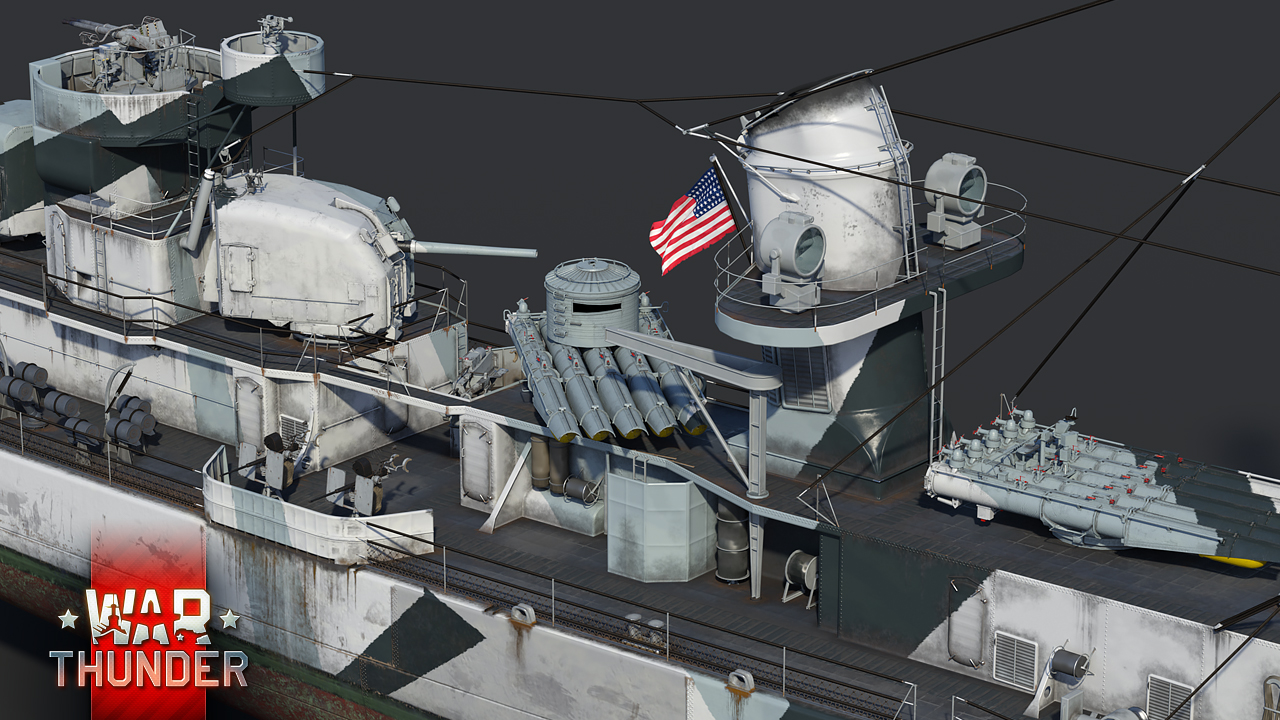 |
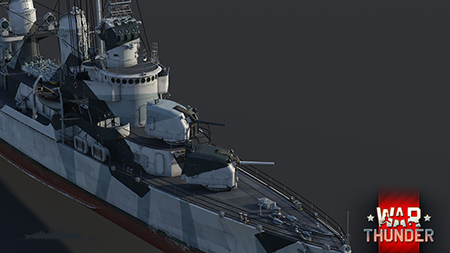 |
The Fletcher is a true jack of all trades and will likely find many fans among our players. She gives the captain absolute freedom in terms of choosing the right tactic for the task at hand. Regardless of whether her commander prefers an aggressive approach, spearheading the attack, or a more defensive one, choosing to support his allies in small fleet operations instead, the choice is truly yours when commanding the Fletcher. However, don’t forget that victory can only be achieved through good team play and coordination. While the Fletcher might be a good ship, she can’t single-handedly bring an easy victory to the team. Stay close to your teammates and observe their actions as getting cut off from them might result in an unplanned deep sea exploration of the nearest coral reef, followed by a potentially costly repair bill.
The Fletcher class destroyer will be available for players to try out in one of the upcoming naval testing sessions. Keep your spyglass focused on the news to find out more about the development of naval forces and announcements regarding the test sessions!
Download Wallpaper: 1280x1024 | 1920x1080 | 2560x1440
Check previous Development Blogs:


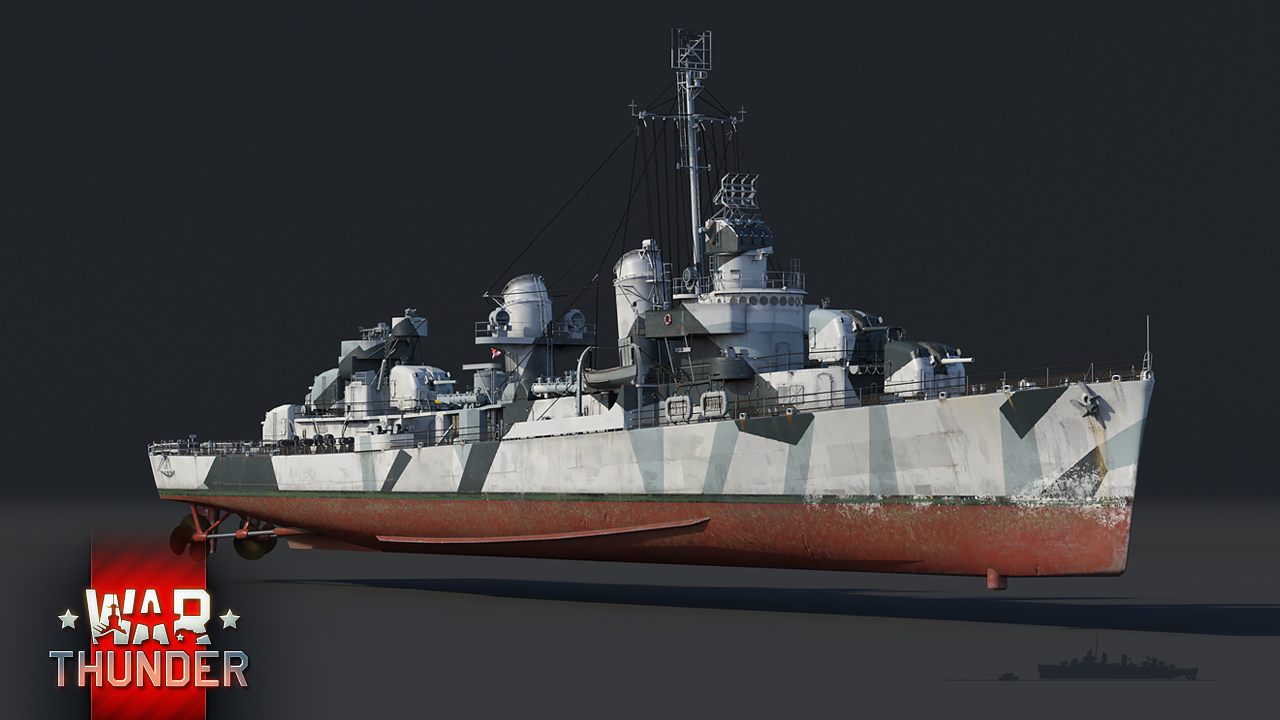
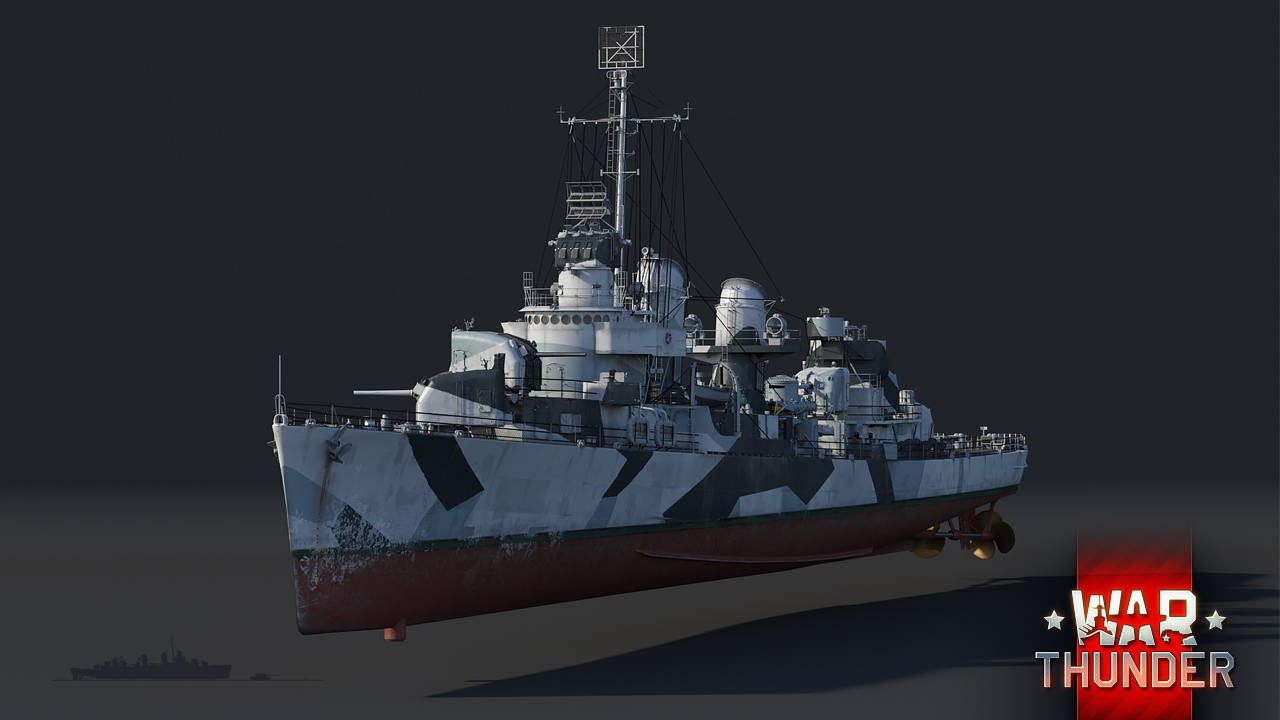
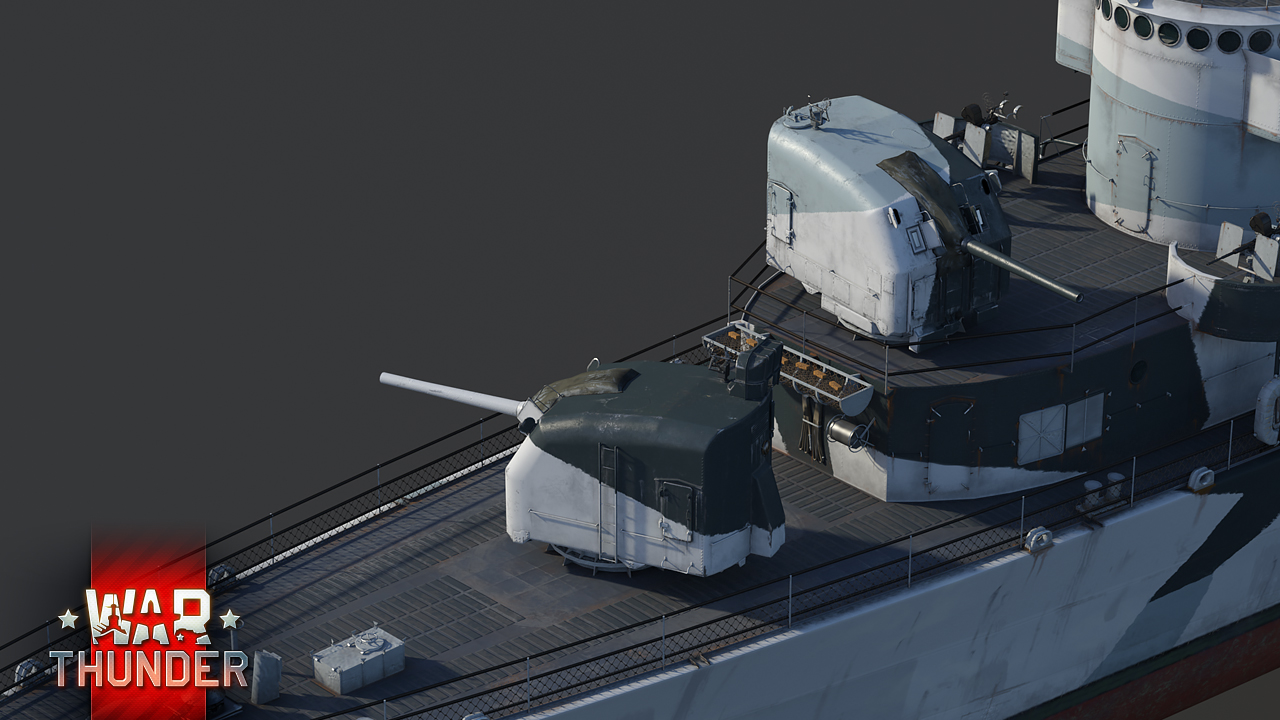
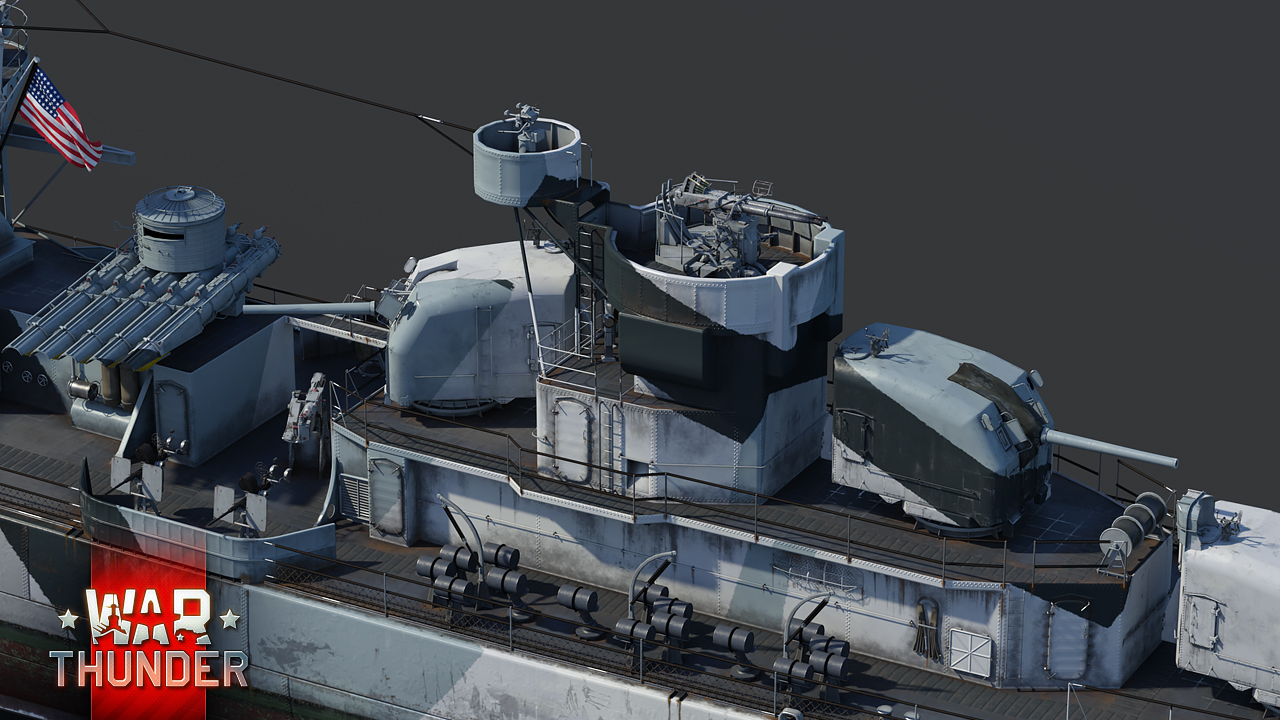

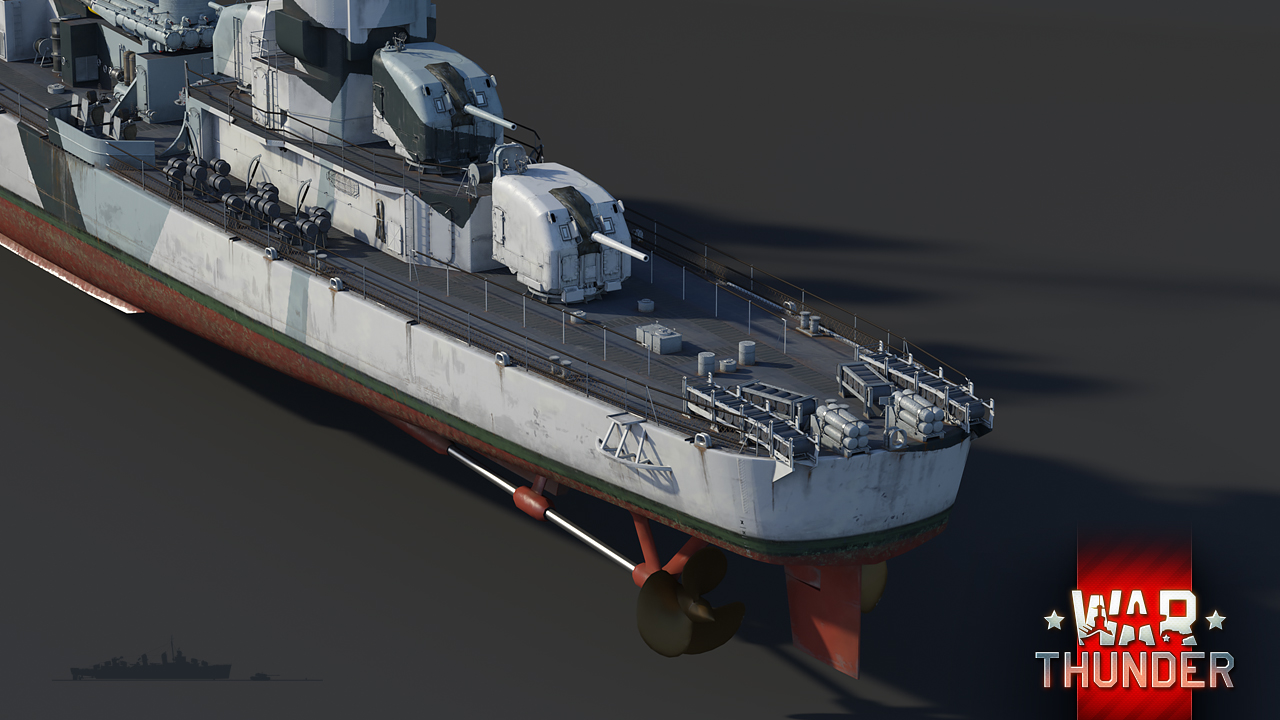
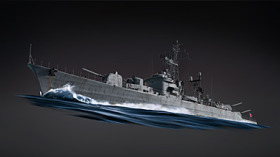



Comments (154)
YEEESSS!!!! ALL OF MY YES!!!!
She's a beauty
2017 2018 are gonna be great years for WT
I'm afraid I'm going to have to ask... could I have some sauce on that beautiful and amazing music?
NOW YOUR TALKING!!!! YAY
Snitchel class destroyer )))
Yee
I am normally not a tin can sailor. But I will be a tin can sailor for this.
Love it!
god i love you guys :D
Submit a complaint